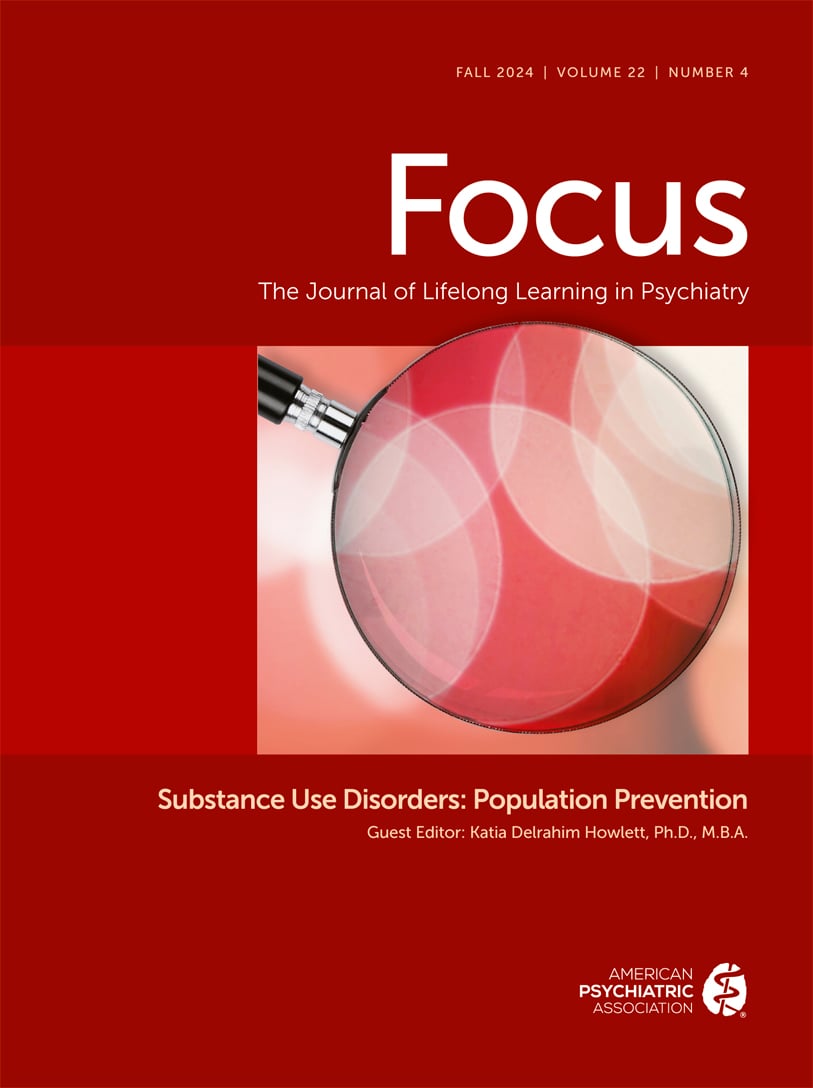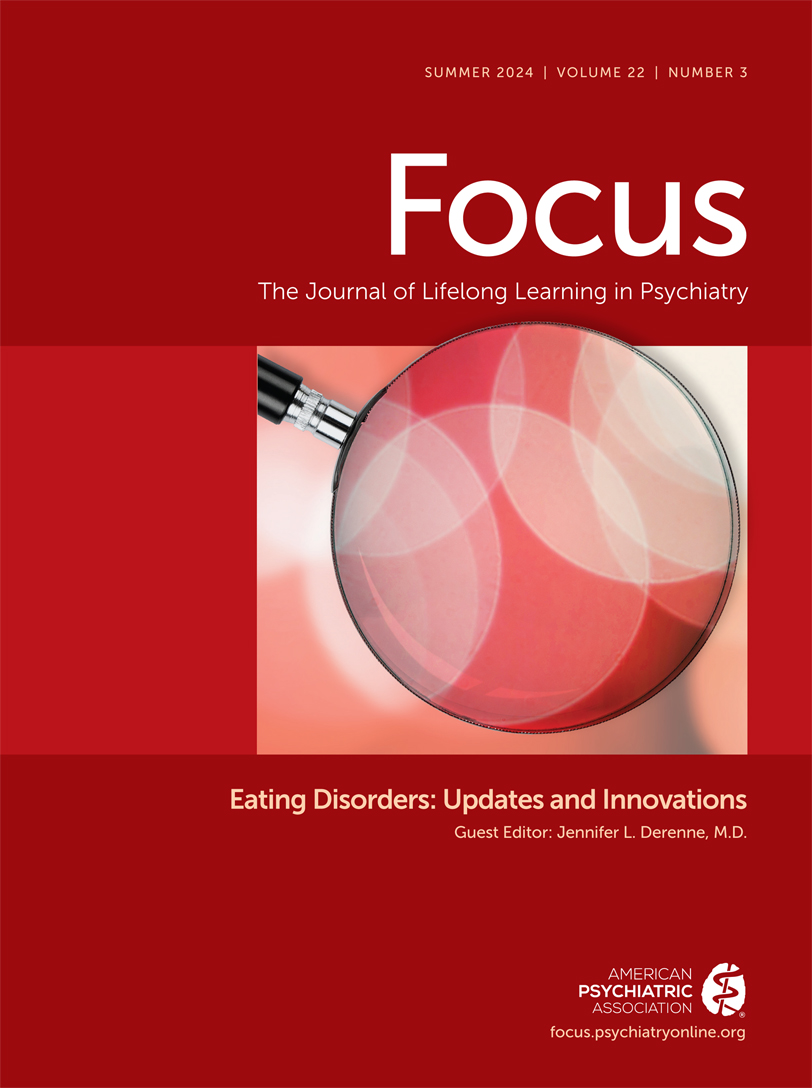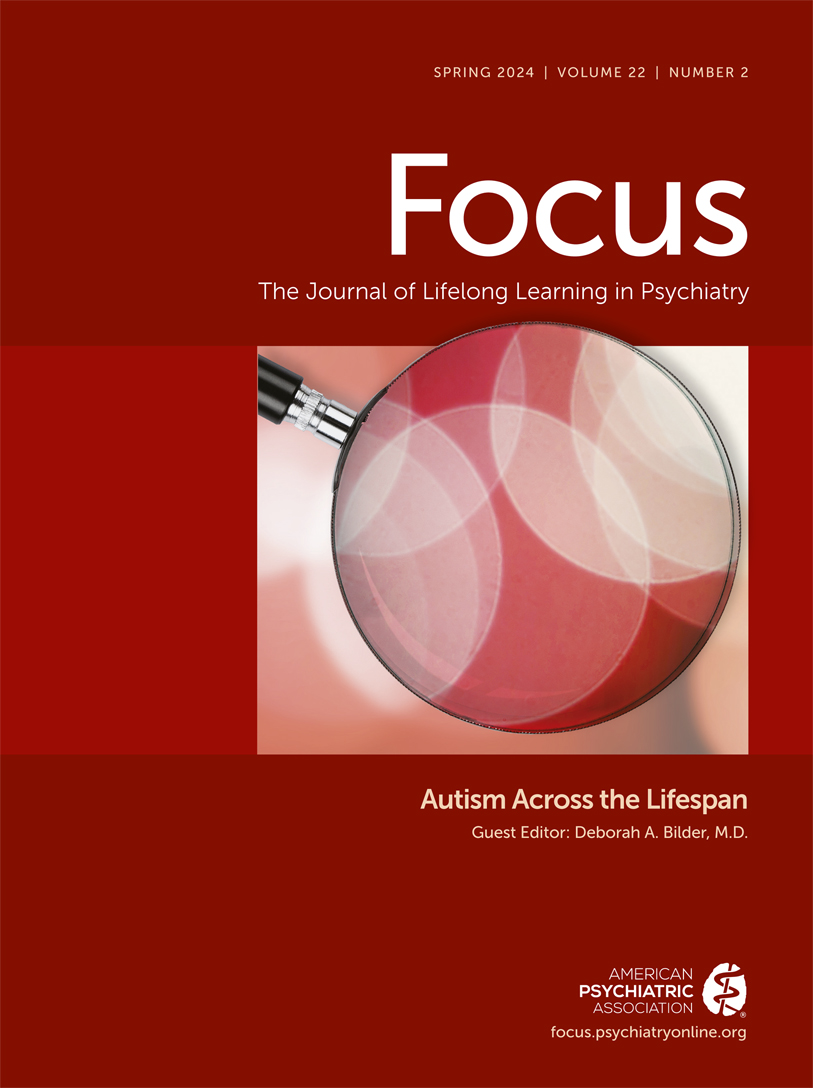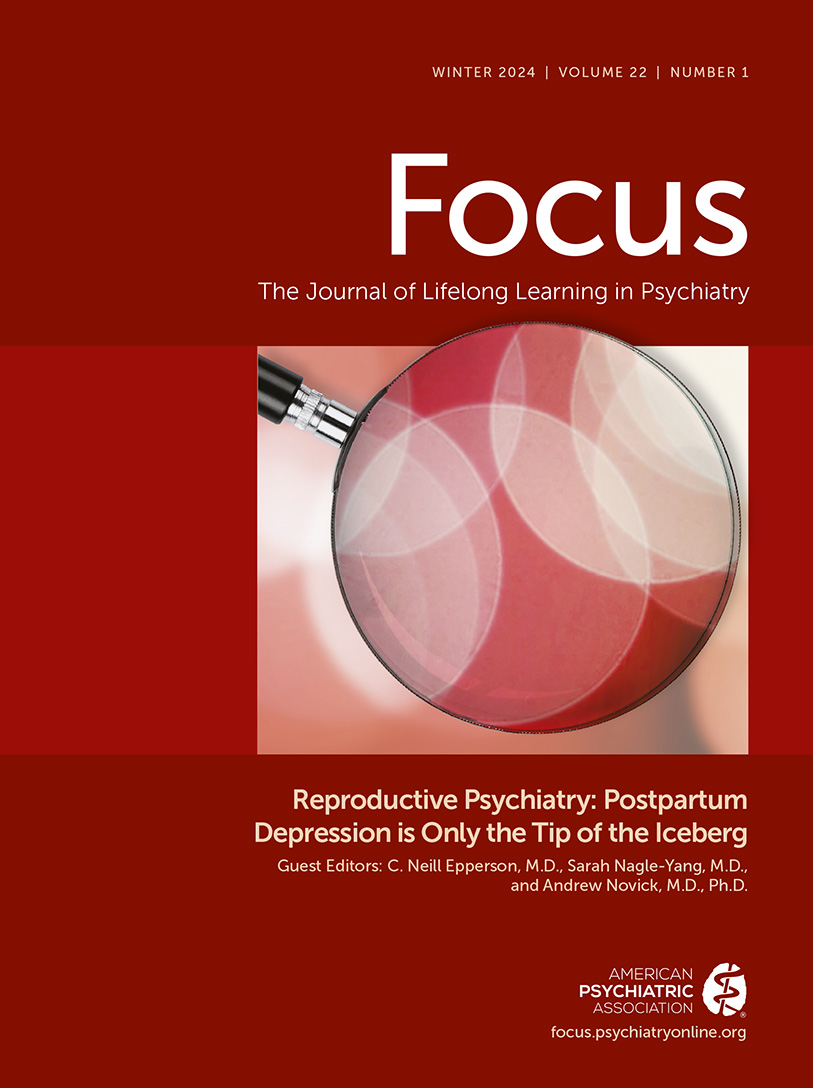Focus
- Volume 14
- Number 1
- January 2016
From the Guest Editor
Clinical Synthesis
Publication date: 01 January 2016
Pages3–8Recent advances in genetics and brain imaging have expanded the understanding of autism spectrum disorder as a complex heterogeneous neurodevelopmental disorder in both etiology and symptom severity. Such discoveries have caused changes in diagnostic ...
https://doi.org/10.1176/appi.focus.20150030Publication date: 01 January 2016
Pages10–14Depression among youths remains a public health concern, particularly because only a fraction of affected youths receive treatment. To obtain treatment, youths with depression must first be identified so that early intervention can occur. Furthermore, ...
https://doi.org/10.1176/appi.focus.20150037Publication date: 01 January 2016
Pages15–19Although for years it was felt to be almost nonexistent, very-early-onset bipolar disorder (before age 12) has become an important member of the mood disorder spectrum of youths. Whether there is a separate subtype characterized by severe irritability or ...
https://doi.org/10.1176/appi.focus.20150038Publication date: 01 January 2016
Pages20–25Disruptive mood dysregulation disorder (DMDD) was introduced in the mood disorders section of DSM-5. Its primary symptoms are “severe, recurrent temper outbursts” (manifested verbally and/or physically) superimposed on and associated with chronic ...
https://doi.org/10.1176/appi.focus.20150039Publication date: 01 January 2016
Pages26–33Anxiety disorders represent the most common psychiatric illnesses affecting children and adolescents. Youths who suffer from anxiety disorders typically experience impairment in social, family, and educational domains of functioning. Despite the ...
https://doi.org/10.1176/appi.focus.20150029Publication date: 01 January 2016
Pages34–45DSM-5 introduced a clustering of disorders designated “trauma- and stressor-related disorders.” These disorders are unique in that the etiology is specified as part of the diagnostic criteria. In this review, the authors consider how some of these ...
https://doi.org/10.1176/appi.focus.20150026Publication date: 01 January 2016
Pages46–53Up to 10% of school-age children have attention-deficit hyperactivity disorder (ADHD), which often persists into adulthood. ADHD can be associated with significant comorbidity of disruptive, mood, and anxiety disorders. Although many children with ADHD ...
https://doi.org/10.1176/appi.focus.20150022Ask the Expert
Patient Management Exercise
Communication Commentary
Ethics Commentary
Influential Publications
Publication date: 01 January 2016
Pages75–89This Practice Parameter reviews evidence-based practices for the evaluation and treatment of eating disorders in children and adolescents. Where empirical support is limited, clinical consensus opinion is used to supplement systematic data review. The ...
https://doi.org/10.1176/appi.focus.140107Publication date: 01 January 2016
Pages90–102Background: Evaluation of treatments for attention-deficit/hyperactivity disorder (ADHD) previously focused on symptom control, but attention has shifted to functional outcomes. The effect of different ADHD treatment periods and modalities (pharmacological,...
https://doi.org/10.1176/appi.focus.140101Publication date: 01 January 2016
Pages103–112Objective: Observational studies show that when a depressed mother’s symptoms remit, her children’s psychiatric symptoms decrease. Using randomized treatment assignment, the authors sought to determine the differential effects of a depressed mother’s ...
https://doi.org/10.1176/appi.focus.140103Publication date: 01 January 2016
Pages113–126There are two divergent viewpoints on the phenomenology and outcome of bipolar I (BP I) disorder in youth. Disparities evolved as unintended consequences from investigators’ inconsistencies both in translating the Diagnostic and Statistical Manual of ...
https://doi.org/10.1176/appi.focus.140105Publication date: 01 January 2016
Pages127–144Although it has long been recognized that many individuals with attention deficit hyperactivity disorder (ADHD) also have difficulties with emotion regulation, no consensus has been reached on how to conceptualize this clinically challenging domain. The ...
https://doi.org/10.1176/appi.focus.140102Publication date: 01 January 2016
Pages145–151Disruptive mood dysregulation disorder (DMDD), a newcomer to psychiatric nosology, addresses the need for improved classification and treatment of children exhibiting chronic nonepisodic irritability and severe temper outbursts. In recent years, many of ...
https://doi.org/10.1176/appi.focus.140104Past Issues
View Issues Archive
Vol. 22 | No. 4

Vol. 22 | No. 3

Vol. 22 | No. 2
